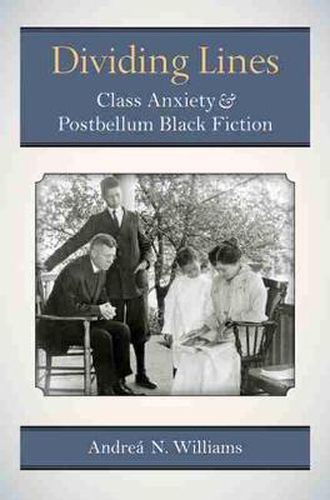Dividing Lines: Class Anxiety and Postbellum Black Fiction
Andrea N. Williams

Dividing Lines: Class Anxiety and Postbellum Black Fiction
Andrea N. Williams
In Dividing Lines , Andrea N. Williams explores how African American literature in the late 19th century represents class divisions among black Americans. By portraying complex, highly stratified communities with a growing black middle class, authors dispelled popular notions that black Americans were uniformly poor or uncivilised. But even as the writers highlighted middle-class achievement, they worried over whether class distinctions would help or sabotage collective black protest against racial prejudice. Williams argues that the signs of class anxiety are embedded in postbellum fiction: from the verbal stammer or prim speech of class-conscious characters to fissures in the fiction’s form. In these telling moments, authors innovatively dared to address the sensitive topic of class differences-a topic inextricably related to American civil rights and social opportunity.
Williams delves into the familiar and lesser-known works of Frances E. W. Harper, Pauline Hopkins, Charles W. Chesnutt, Sutton Griggs, and Paul Laurence Dunbar, showing how these texts mediate class through discussions of labor, moral respectability, ancestry, spatial boundaries, and skin complexion. Dividing Lines also draws on reader responses-from book reviews, editorials, and letters-to show how the class anxiety expressed in African American fiction directly sparked reader concerns over the status of black Americans in the U.S. social order.
This item is not currently in-stock. It can be ordered online and is expected to ship in approx 4 weeks
Our stock data is updated periodically, and availability may change throughout the day for in-demand items. Please call the relevant shop for the most current stock information. Prices are subject to change without notice.
Sign in or become a Readings Member to add this title to a wishlist.


